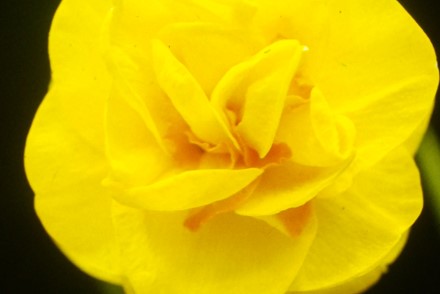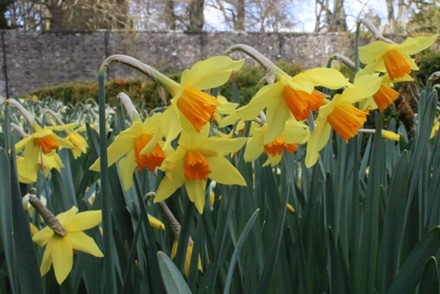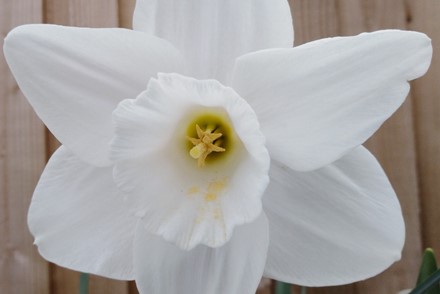Join the 'Hunt for rare daffodils' that are slipping from history
12th February, 2025
Plant Heritage and the RHS - Royal Horticultural Society are asking for help in finding rare and missing daffodils that risk being lost to history and science, in particular 'Mrs R O Backhouse', 'Sussex Bonfire', and 'Mrs William Copeland'.
You can log your daffodils here https://www.rhs.org.uk/science/daffodil-diaries.
Gwen Hines, Chief Executive notes: 'Rare varieties [of daffodils] could be lost if they're not found and cared for. There's the joy that they bring to all of us in the springtime ... and also, in the future, they might be important for medicines for science," she said.
Read more on the BBC News today (12 February 2025): https://www.bbc.co.uk/news/articles/c0qwvppk0zzo
Several rare daffodils are held safely in the Plant Heritage National Plant Collections such as 'Mrs R O Backhouse' in the Backhouse Rossie collection in Fife, but we're asking people what can they find in their gardens or local parks?
Some are now only recorded in images, such as Narcissus 'Sussex Bonfire' but are hopeful someone might identify one in their garden. The Sussex Group of Plant Heritage are keen to trace a buld of this plant to add to their shared National Plant Collection of Narcissus bred by Noel Burr. Read all about the daffodils bred by Noel Burr and the varieties Plant Heritage Sussex continue to look for on our blog, with images too: plantheritage.wordpress.com
We hope everyone enjoys the springtime hunt for daffodils and their labels - we'd love to hear about them.
Did you know? There are 6 National Plant Collections of Narcissus (daffodils) across the country - find out more at https://bit.ly/PHNarcissusCollections
Read the full RHS campaign to map the daffodils below.
The RHS, along with Plant Heritage is asking industry and gardeners to help it map the UK’s daffodils and locate three rare or historically significant varieties as it celebrates the country’s most ubiquitous plant this spring and one hundred years since its science saved the daffodil industry.
With hundreds of different daffodils thought to be found in the UK, the RHS has launched Daffodil Diaries, asking people to log where daffodils are blooming in their area alongside basic information such as colour, type and height. Scientists at the RHS will then use this information to understand environmental influences on the plant, buyer preferences and spread.
It will also invite people to join the search for three at risk or thought to be extinct daffodils. Locating these daffodils will help better understand our gardening heritage, aid their survival and even enable the preservation of genetic material that could be valuable for future breeding of daffodils, particularly as our climate changes.
The call to action comes as the RHS celebrates one hundred years since its scientist James Kirkham Ramsbottom was honoured for his work in developing a hot water treatment against eelworms which saved the daffodil. The treatment remains a standard precaution in bulb production today. The RHS also holds the register of known daffodil cultivar names bred around the world, recording each plant’s distinguishing features for research and reference purposes, while its retail offerings have noted an increase in demand for plants in bulbed form in recent years.
Thought to date back to 300BC daffodils are known to have spread eastwards and westwards from the Iberian Peninsula and North Africa. By the 1600s daffodils were recorded as being grown for aesthetic, rather than medicinal, purposes. From the early 1800s daffodils became hugely popular in Britain and were being deliberately hybridised to create new garden daffodil forms and colours.
Daffodils the public are being asked to help find, selected with the help of the RHS Bulb Expert Group and horticultural conservation charity Plant Heritage, include:
- ‘Mrs R.O. Backhouse’ – one of the first pink daffodils, with a solid coral pink trumpet and ivory flowers. Thought to have been bred by leading female hybridiser of the era Sara Backhouse and named for her by her husband after her death in 1921. The daffodil is known to exist in national collections but its whereabouts beyond that is not known with the majority of reported discoveries in fact ‘Salome’ whose yellow trumpet transitions to peach.
- ‘Mrs William Copeland’ – a white, double-flowered daffodil named after the wife of breeder WFM Copeland. Not for sale in recent years but known to be gifted via an American grower in the early 2000s to a direct descendant in the UK.
- ‘Sussex Bonfire’ – a double-flowered yellow and orange daffodil bred by Noel Burr, an amateur breeder from Sussex who registered 58 new cultivars of daffodil, naming many after local places and people. Sussex Bonfire has never been located, and Plant Heritage’s Sussex Group would be delighted to add this to their shared National Plant Collection of daffodils.
All information and images of daffodils thought to be the above varieties should be submitted via the Daffodil Diaries page on the RHS website - https://www.rhs.org.uk/science/daffodil-diaries.
RHS Gardens will also celebrate the plant through colourful displays from January through to May that collectively feature more than 150 cultivars, while the RHS website will publish a succession of content charting the history and cultural influences of the plants. The original copper boiler that administered the hot water treatment, saving the daffodil industry, resides in the RHS Lindley Library.
Dr Kálmán Könyves Principal Scientist in the Cultivated Plant Diversity team at the RHS and expert in classifying and recording daffodils said: “Daffodils have come to mark the arrival of spring and are celebrated for their welcome burst of colour in gardens, parks and roadsides. But there’s more to this ubiquitous yellow flower than meets the eye, with 31,000 known varieties available in green, pink and red. Understanding where they can be found will help us in preserving this diversity for the future.”
Gwen Hines, CEO of Plant Heritage said: “Springtime daffodils are abundant, but rare varieties could be lost from our gardens and roadsides if they’re not found and cared for. While six National Plant Collections do protect some, many others aren’t yet safeguarded, which is why we encourage everyone to look for rare varieties this spring.”
Daffodil Diaries runs from 17th February until 4th May when RHS Garden Harlow Carr hosts the Late Daffodil Show. Daffodil Shows also take place at RHS Garden Rosemoor (8-9th March), RHS Garden Hyde Hall (19-20th March) and RHS Garden Wisley (8-9 April).
RHS Daffodil Facts:
- Daffodils are a source of galantamine, an important Alzheimer’s treatment which cannot be reliably synthesised.
- The Daffodil has come to symbolise resilience – being the first of the spring flowers to brave the cold but in Victorian times the plant meant ‘egotism’, ‘disdain’ or ‘unrequited love’.
- There are 31,000 cultivars of daffodil which are organised according to 13 different types, including trumpet, double and split corona daffodils
- Tooting in South West London has a long association with daffodils having been home to the nurseries of Peter Barr, otherwise known as the ‘Daffodil King’. Peter amassed a collection of more than 400 varieties, with rare types known to still spring from the ground. The Peter Barr Memorial Cup is awarded by the RHS each year.
- The UK grows 90% of the world’s cut flower daffodils



Narcissus 'Fletching'
© G Firth

